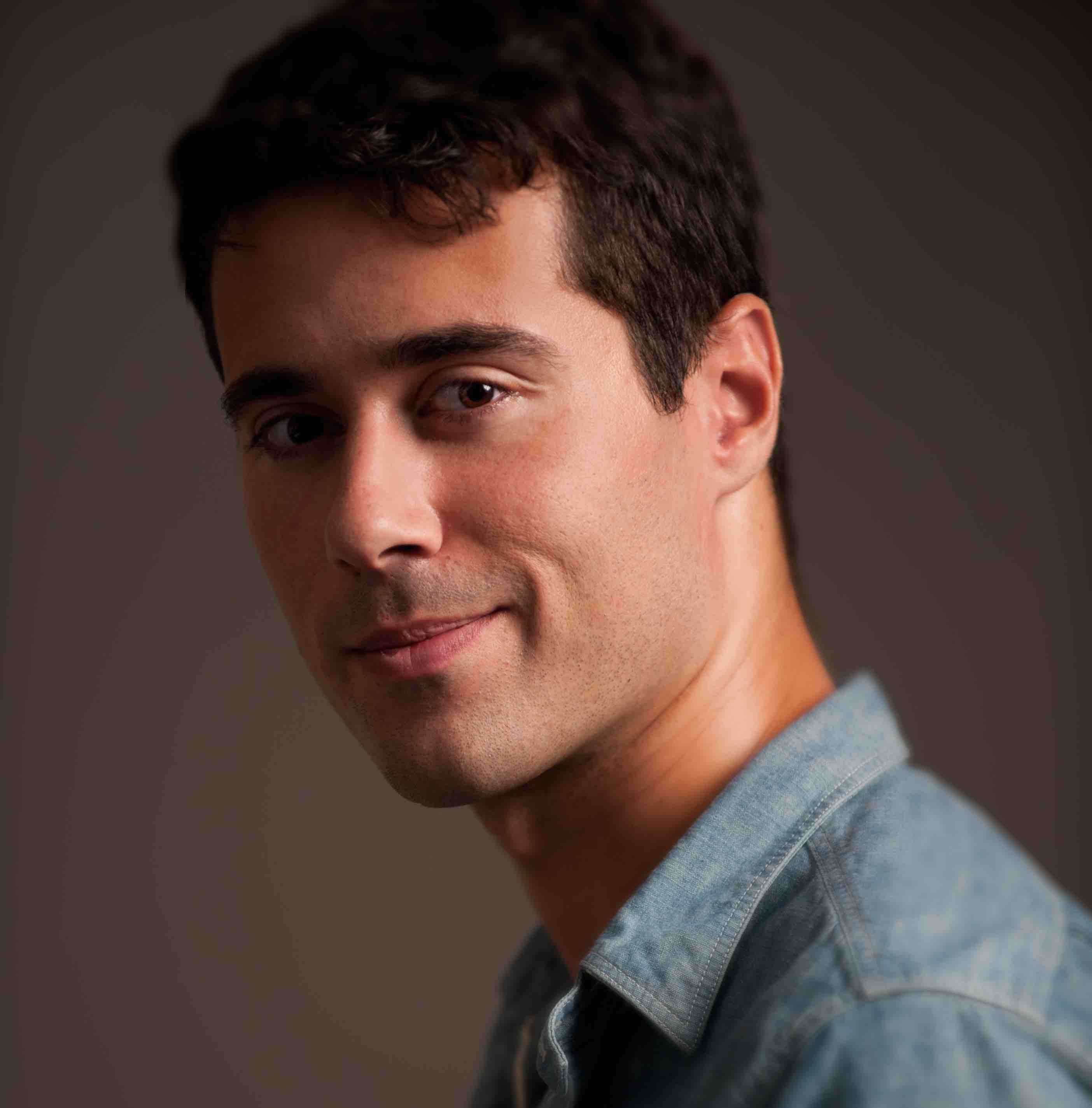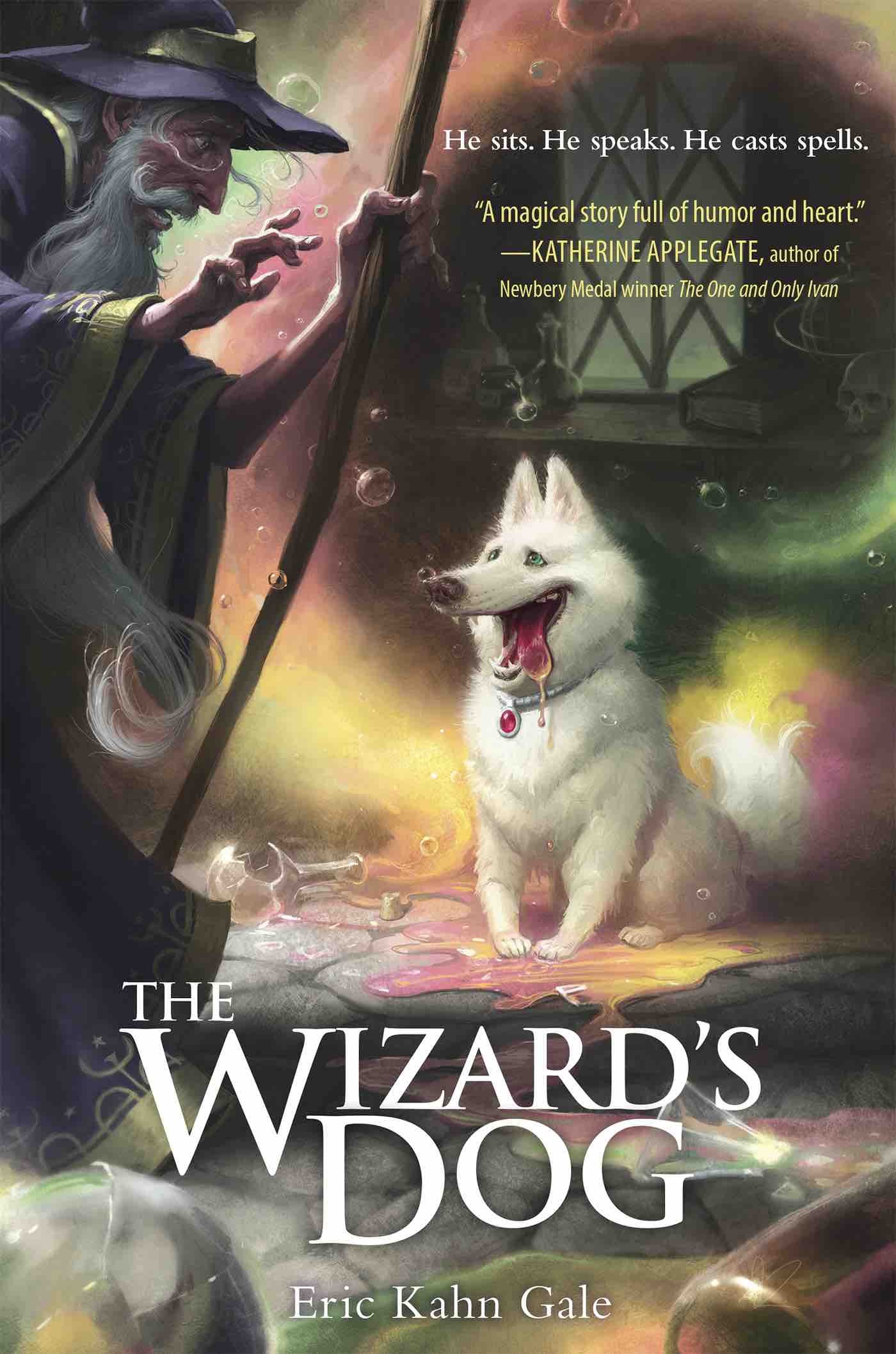 Eric Kahn Gale is the author of three novels for young readers. The following is a complete transcript of his interview with Cracking the Cover for his latest middle-grade book, “The Wizard’s Dog.”
Eric Kahn Gale is the author of three novels for young readers. The following is a complete transcript of his interview with Cracking the Cover for his latest middle-grade book, “The Wizard’s Dog.”
Why do you write?
I actually first became interested in writing because of acting! In middle school, I was in every single play and musical. I was a waiter in Hello Dolly, a butler in Annie, and a popcorn vendor in State Fair. I was usually in the chorus, and frequently service-people, and I would have been fine with that if I’d thought the plays were a little better. But as much as I loved the art of acting, I didn’t like the material that I was acting.
A friend of mine (who is also a writer today) suggested that we could write our own play to act in. This had never occurred to me. We wrote film scripts and a few short plays. By college, I’d written a full play that I was really proud of, but I couldn’t get a production mounted anywhere. Plays took money to produce, and I was unable to produce any money. If this play were instead a novel, I realized, it would cost me about 10¢ a page to print it out at Fedex office and I would have a complete work of art.
That’s what turned me to book writing and ten years later I’d transformed that play into my second novel, The Zoo at the Edge of the World.
Why specifically for young readers?
It wasn’t intentional. I’d been writing for many years and in many formats before I started work on The Bully Book. And in my first draft I wasn’t consciously writing for young readers–I was writing about my younger self using the inner voice that I remembered from that time. It wasn’t until I started the process of selling the book to publishers that it was clear they were looking at this as a book primarily for children.
Then I embarked on a school tour in support of The Bully Book and fell in love with speaking to kids. Their enthusiasm and idiosyncratic rhythms were so great to engage with, and I understood a little better why children’s literature is separated from literature as a whole. Children are energetic, curious, and interested in the world, but they are also very constrained by their circumstances and extremely dependent on others. They need stories of characters gaining agency over their lives and growing in new directions.
That stuff is fun to write. And also, I just love kids. When I think about a ten-year-old on the other end of a book I’m writing I want to make them laugh, capture their imagination, and take them on an adventure.
“The Wizard’s Dog” is inspired by your own dog, Bowser. What made you decide to set your book in the Arthurian landscape?
I don’t know if this is typical, but 30% of conversation between my wife and I is speaking for our dog Bowser. How we portray him has changed over the years, but early in our relationship I had Bowser talking like a little English boy who was fascinated by the Magic Door that sealed our apartment off from the world. He saw me as an astonishing wizard who could open the Magic Door and produce precious food whenever I wanted.
Years later, this joke finally revealed itself to me as the basis for a novel and The Wizard’s Dog was born. I’d always known the Wizard would be kidnapped and the dog would have to use what little magic he’d picked up to save him, but I was unsure if I should make up a totally new world and story, or adapt a legend. I opted for the latter because the idea of a talking dog wielding magic is really silly, and I hoped that grounding it in some familiar story points would make this wacky premise easier to enter and take some of the narrative burden off of Nosewise. He is a pretty unreliable narrator and misunderstands a great deal of what’s going on around him–basing his adventure in Arthurian characters and themes gives the reader a roadmap for Nosewise to run wild on.
 How exactly did you get into Nosewise’s head?
How exactly did you get into Nosewise’s head?
Nosewise’s character voice was hard to pin down. He is the first-person narrator of the book and therefore uses language to tell his story, so some anthropomorphizing of Nosewise was necessary. Yet, I wanted him to maintain the point-of-view of a dog, so early in the book, though Nosewise accurately relates events to readers, he doesn’t really understand them. For example, in the first scene, Nosewise’s master Merlin is instructing his apprentice Morgana in the art of casting magical light. Nosewise sees Merlin acting similarly to how he did when he taught Nosewise to Sit, Stay, and Roll Over, and conflates the dog tricks he learned with the spell-casting skills Morgana is acquiring. He wonders why the tricks Merlin taught him are so lame in comparison.
Keeping his narration funny, balanced and plot-driven was very difficult and probably the reason why I rewrote this novel about ten times before finally getting it right.
Though “The Wizard’s Dog” stands alone, there is definitely room for a companion or followup novel. Any plans?
Oh yeah. One thing I didn’t expect when I started researching Arthurian legends was how in love I would fall with portrayals of the Fae. Not the Tinkerbell type fairies we are familiar with today, I’m talking about the mysterious Celtic spirits that are rich with lore.
They became a big part of The Wizard’s Dog and they play an even more outsized role in the sequel, which finds our heroes adventuring through many layers of the Otherworld, searching for a certain magical cup to aid a dying friend.
What do you think makes “The Wizard’s Dog” stand out from its contemporaries?
I know that the premise is silly and Nosewise is a goof, but I hope that my complete awe at the human/dog relationship comes through. I grew up in a very dog-focused household and have spent most of my life wondering about the dog experience.
Dogs and humans first came into a partnership 50,000 years ago. We have an older relationship with them then we do with corn or rice. We are two species that literally evolved to be best friends. I’ve thought about that for twenty years and it still blows my mind every time.
I know it’s funny to make a dog the hero of a novel. But to me, dogs deserve a place in our literature and it has really been a dream come true to make my small contribution towards that.
“The Wizard’s Dog” is your third published novel. How has your writing evolved from beginning up to now?
I hope that it’s gotten better, but that’s something impossible for me to judge. What I know has gotten better is my writing process. I used to be a very inconsistent writer and spent a lot of energy avoiding writing. I stopped and started work on The Bully Book many times and I didn’t have a set schedule or even a strategy for how I would proceed.
Now, I’ve got it down. I know that I need to write up a rough summary for any new book project. I do several drafts and run it by friend. Then I write a more detailed chapter by chapter outline. Once that is satisfactory I simply write one or two chapters from my outline everyday in a morning and afternoon shift. I write so much faster now and I’m very happy not to be seeing the clock strike midnight and thinking how I didn’t write enough for the day.
What are you working on now?
I completed a draft of The Wizard’s Dog 2 (temporary title) a few months ago and have been waiting for notes on it from my editor. In the meantime I’ve been plotting out a third Wizard’s Dog book and exploring ideas for other writing projects.
Is there a book from your own childhood that still resonates with you today?
I’m always embarrassed when people ask this, because my favorite books as a kid were the Clue mysteries. Seriously, this was a series of like, ten books, about Colonel Mustard and Miss Peacock and the gang. They were each filled with short mysteries about stolen stuff and lies, and the last story someone always killed Mr. Body (the subsequent book always explained how he had only appeared dead and was well enough to be killed again.)
I didn’t start reading really good books until high school. Maybe that’s why I’m working in Children’s Literature. I’m trying to make up for a quality reading life I never had. 🙂
